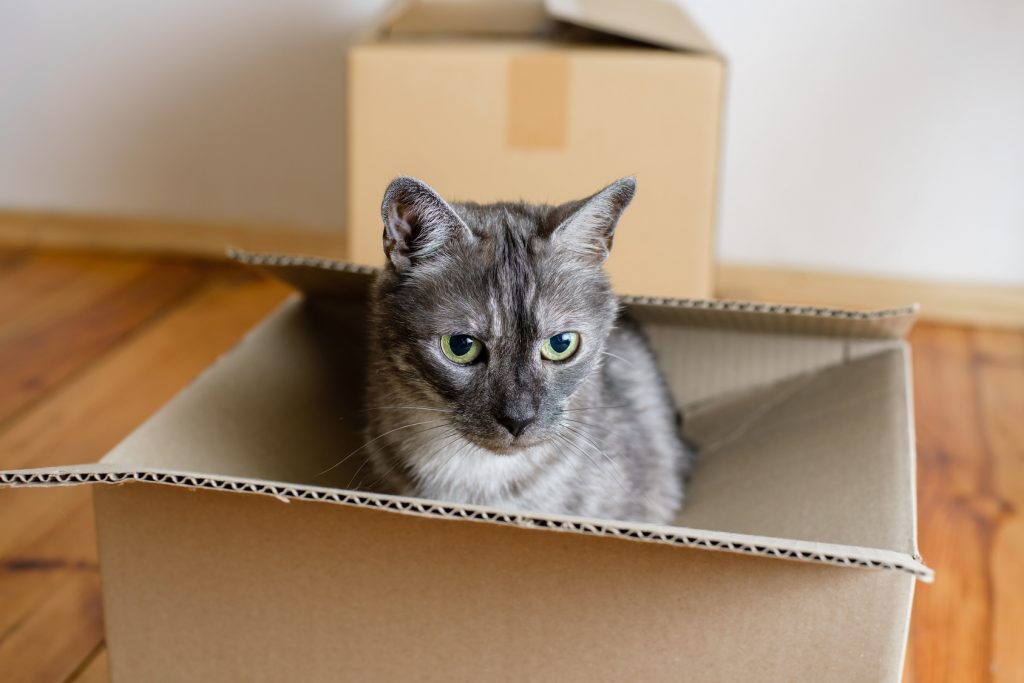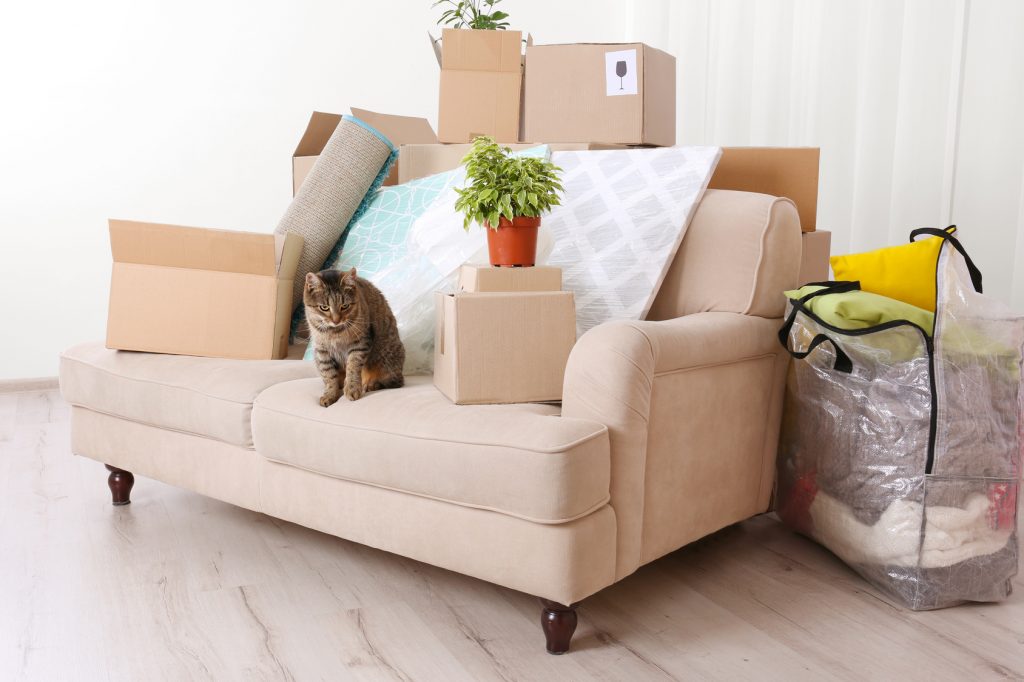Hello, all! Boo the dog here to talk about a subject that gets me nervous and stressed out: Moving! If you’ve ever moved before, you know just how much time, energy and expense goes into it. Add a fur baby on top of that, and you can have a stressful situation on your hands. However, with some careful planning and preparation, you can make moving with a pet pawsitively purr-fect.
Before the Move
The best way to ensure a smooth transition to a new home for you and your pet is to plan, plan, and plan some more. Here are some things to consider before the big moving day:
Vet and groomer appointments:
- Especially if you are moving to an entirely different city, ask your vet if they can refer another vet in your new location.
- If your pet has a condition that requires medication, be sure to refill any prescriptions before the move, and set up where you will get them filled in your new town. If your pet is likely to be extra nervous on the move, you may also ask your vet to prescribe a sedative to take the edge off.
- Make sure you have copies of medical records and proof of vaccinations.
- If your pets are due for shots, take care of them before your move just in case it takes a while to set up a new vet in your new location.
- For pups, make an appointment at the groomer the week before the move. Their nails will be trimmed, and they will be nice and clean for the car or plane ride. For cats, you should consider a good brushing to cut down on shedding, which may increase with the stress of the move.
Planning for the journey:
- Although us pets love being at home with our parents, you may consider boarding us a couple days before the move. We notice when things are scattered about and boxes are being loaded up, and it can make us behave differently. Boarding at the kennel a couple days before the journey and picking up on the departure day may cut down on your pet’s anxiety.
- If driving: Plan your route, finding out where to take potty and snack breaks. If you are traveling a long distance, make reservations in advance at a pet-friendly hotel. Make a list of things that will go in the car and not on the moving truck, such as toys, blankets, food, etc.
- If flying: If you are flying to your new home, find out directly with the airline what they require for traveling with a pet and how much it will cost. Most airlines will allow small cats and dogs to fly in a carrier in the main cabin with you. Find out carrier size restrictions before flying, and check out the Animal Rescue Site for travel bag options. Larger pets may be required to travel in the cargo area. This can be very stressful and scary for your pet.
Check out this video on how to decrease their anxiety in this situation:
During the Move
Once you’ve planned thoroughly, there are things to consider on move-in day to keep us fur-babies happy.
- Spoil us! Take us for extra walks or to the dog park, give us our favorite treats, buy us a new toy, and keep us excited and loved during this busy time.
- Keep close tabs on us during the move. Some companies offer “paw-some” technology that will help you notice any physiological changes to your pet. For example, PetPace.com provides a collar that senses heart rate and other vital signs, which you can keep track of on an app on your phone.
- Take frequent breaks on your road trip if you have a long journey. Many highway rest stops have designated dog run areas.
After the Move
Your move has taken plenty of planning and energy, but there are still some things as a pet parent to consider once you arrive at your destination.
- Walk into your new apartment or home by yourself first. This will allow you to check out your pet’s new surroundings and figure out where you can then isolate them while you start bringing in your belongings.
- Put your pet into a single room with their things and any other familiar objects that are easy and quick to unload. This will give them a safe space while you unpack.
- Once all your boxes and furniture are moved in, let your pets out to explore their new home. Placing familiar objects in similar locations as your previous home and sticking to your normal routine will help your pets transition smoothly and become comfortable in your new home.



Leave A Comment
You must be logged in to post a comment.